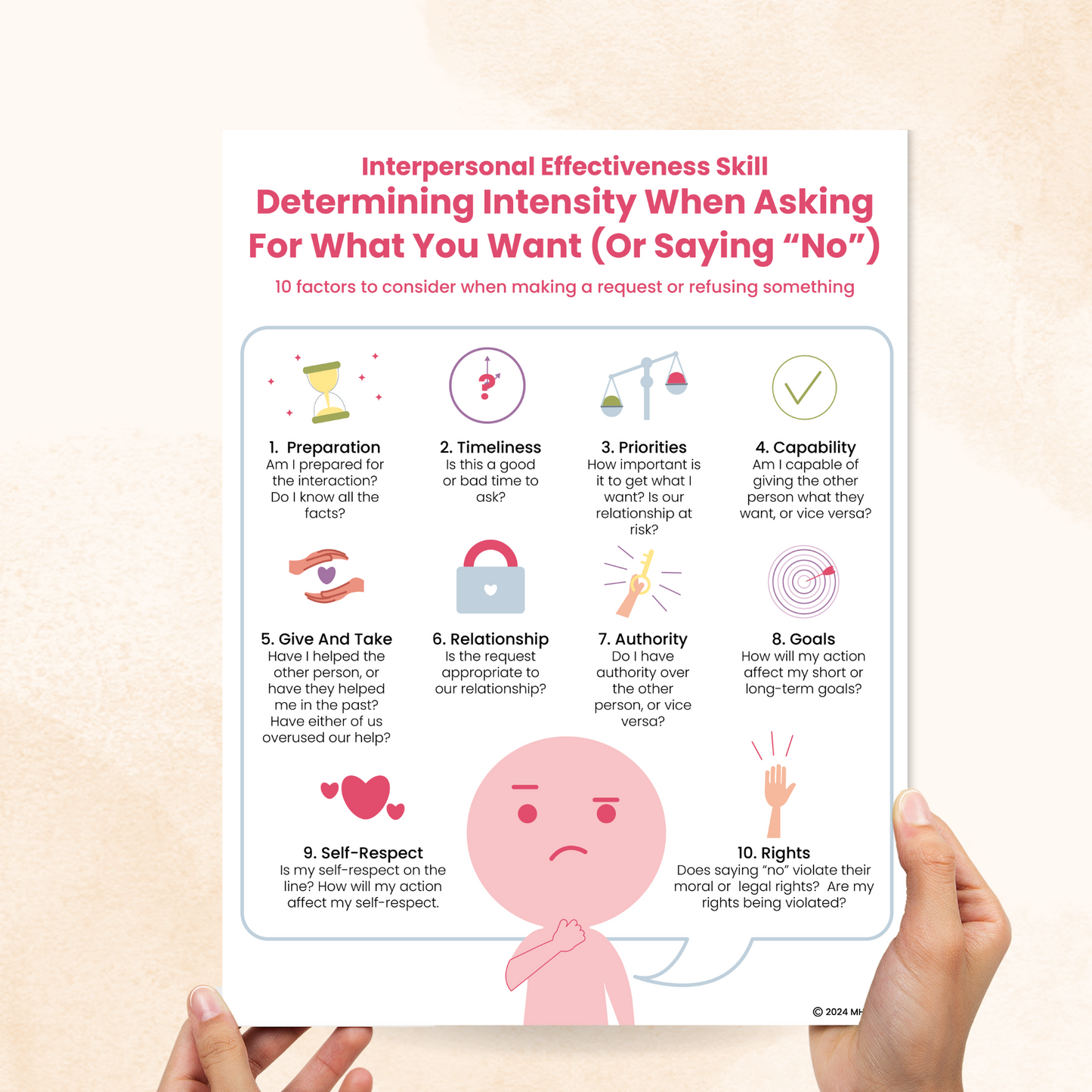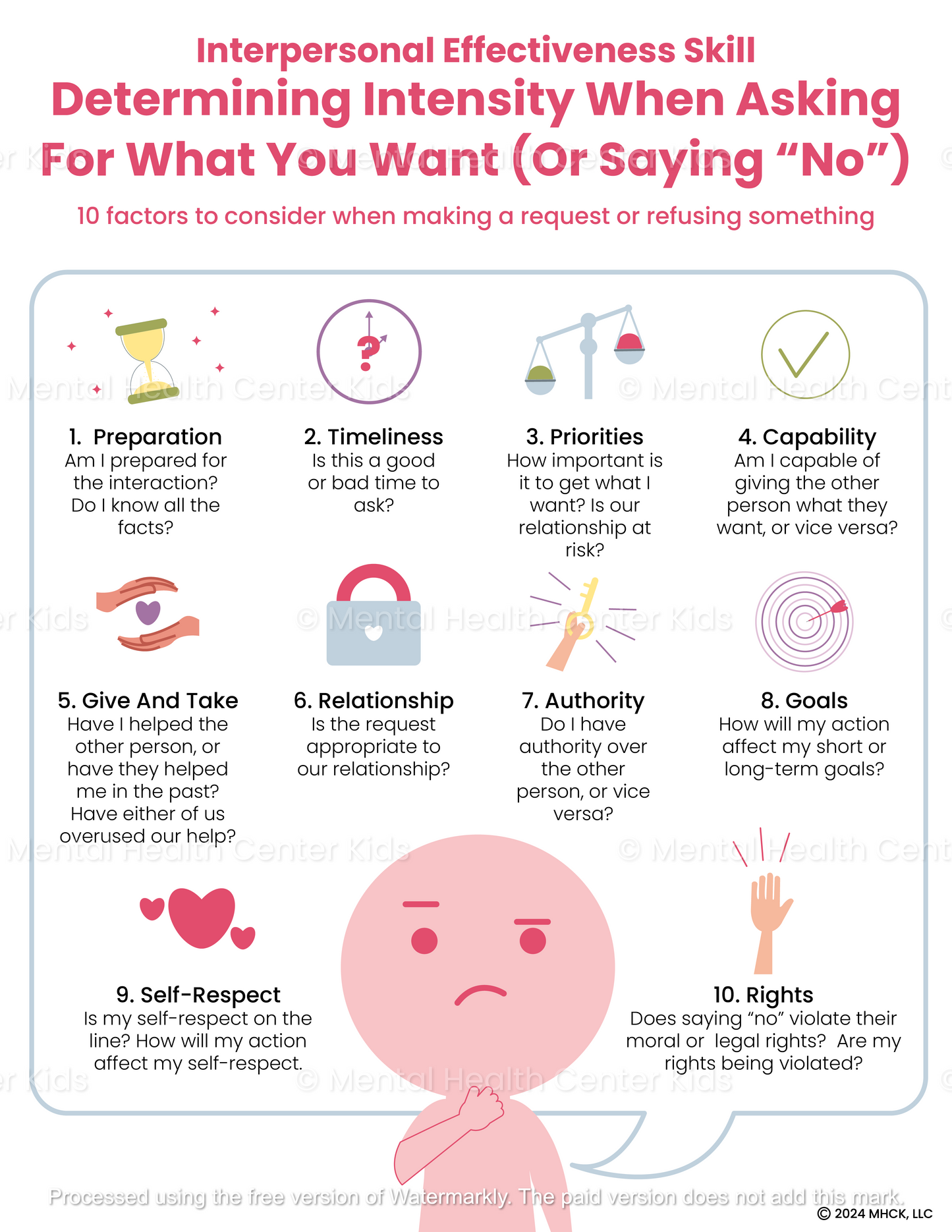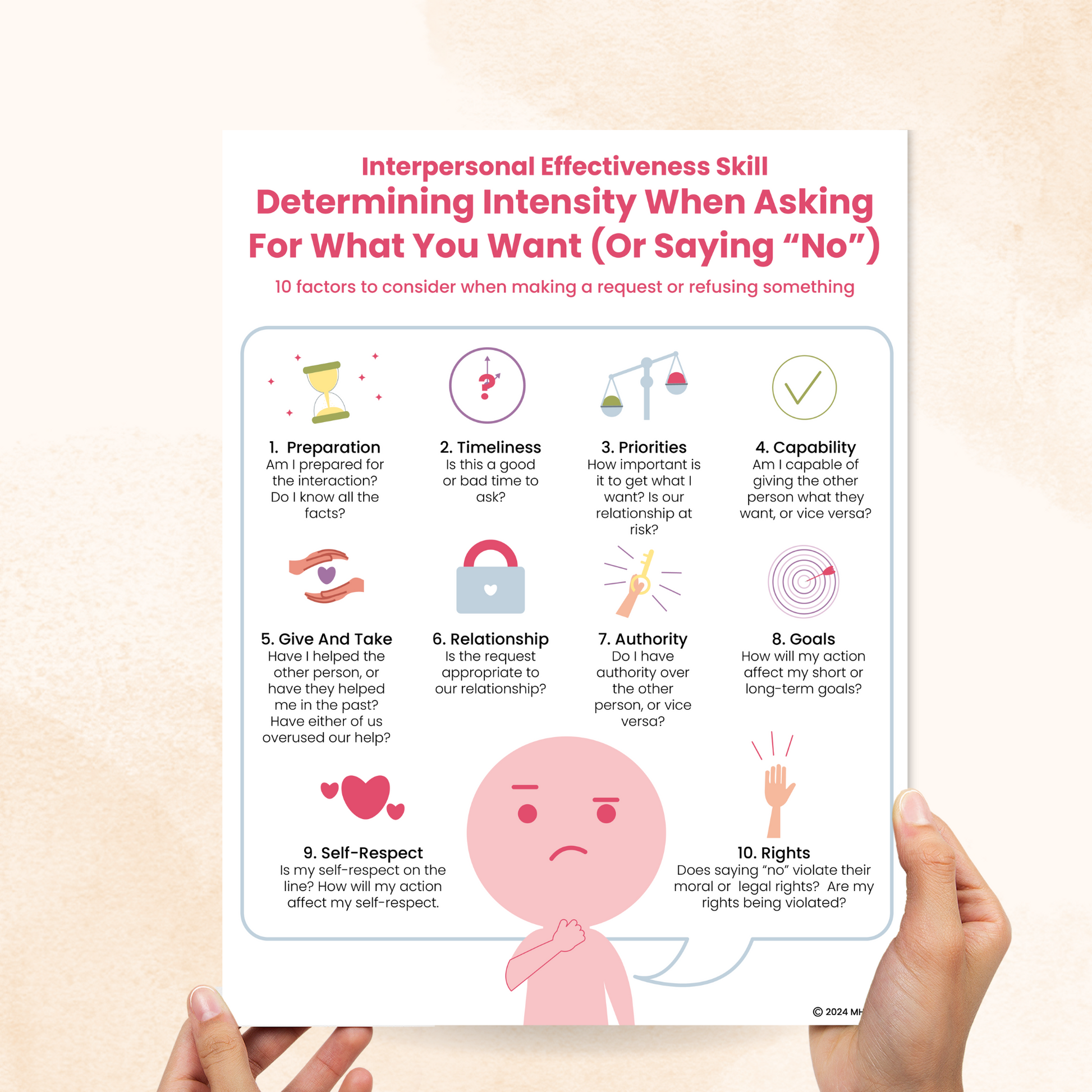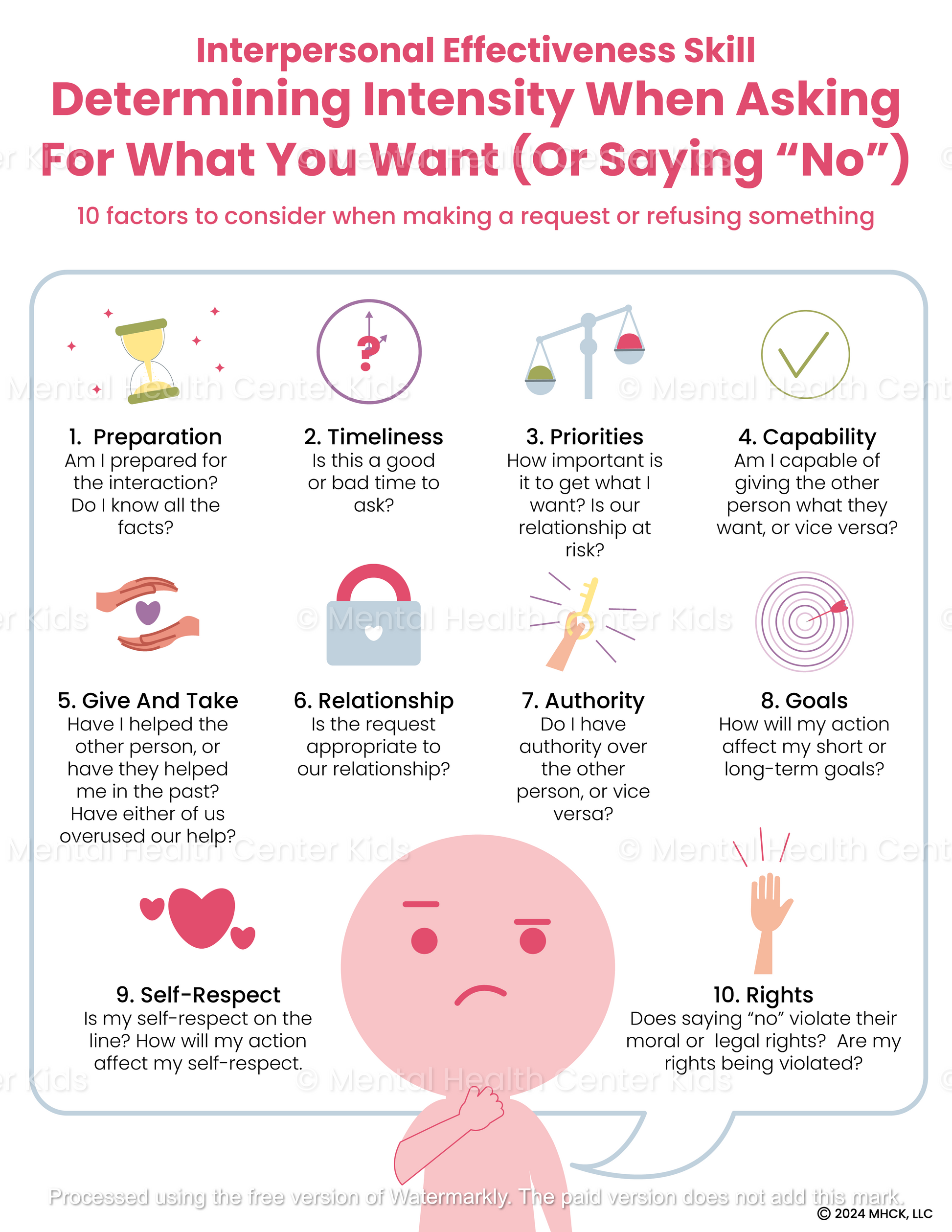DBT Determining Intensity Of Asking Handout


Assertively refusing or making a request is a useful skill to set healthy boundaries and to take care of your emotional needs in a situation. Learning when to say no and when to say yes is an essential part of feeling comfortable in interpersonal relationships, and creating boundaries leads to feeling safe, loved, calm, and respected.
The DBT Determining Intensity Of Asking Handout discusses 10 factors to consider when making or refusing a request. It includes things like preparation, timeliness, priorities, and capability. Each category has a question clients can ask themselves to determine if their request is appropriate or not, or if they feel that their rights are being violated.
Using this handout helps kids and teens to practice their assertiveness skill by not being too worried about other people’s opinions and increasing their confidence. They can always go back to this handout as a guide in case they are having a hard time refusing or making a request. Parents can remind them that having boundaries is okay and encourage them to practice that often.
Our Intensity Options Handout can complement this handout by illustrating the level of intensity from low intensity to high intensity when asking for what you want or saying no.
*This item is an instant digital download. A link to download your files will be emailed to you once payment is confirmed.
Want more resources like this? Check out our full catalog of DBT worksheets and handouts.
References:
- Hamilton, E. (2011). Dialectical Behavior Therapy (DBT): Building Bridges in Public and Global Mental Health. https://doi.org/10.17615/hxqq-b891
- Schlund, R., Sommers, R., & Bohns, V. K. (2024). Giving people the words to say no leads them to feel freer to say yes. Scientific Reports, 14(1). https://doi.org/10.1038/s41598-023-50532-3
- Tawwab, N. G. (2021). Set boundaries, find peace: A Guide to Reclaiming Yourself. Hachette UK.
- Instant digital download
- File: PDF
- Size: 8.5" x 11"



